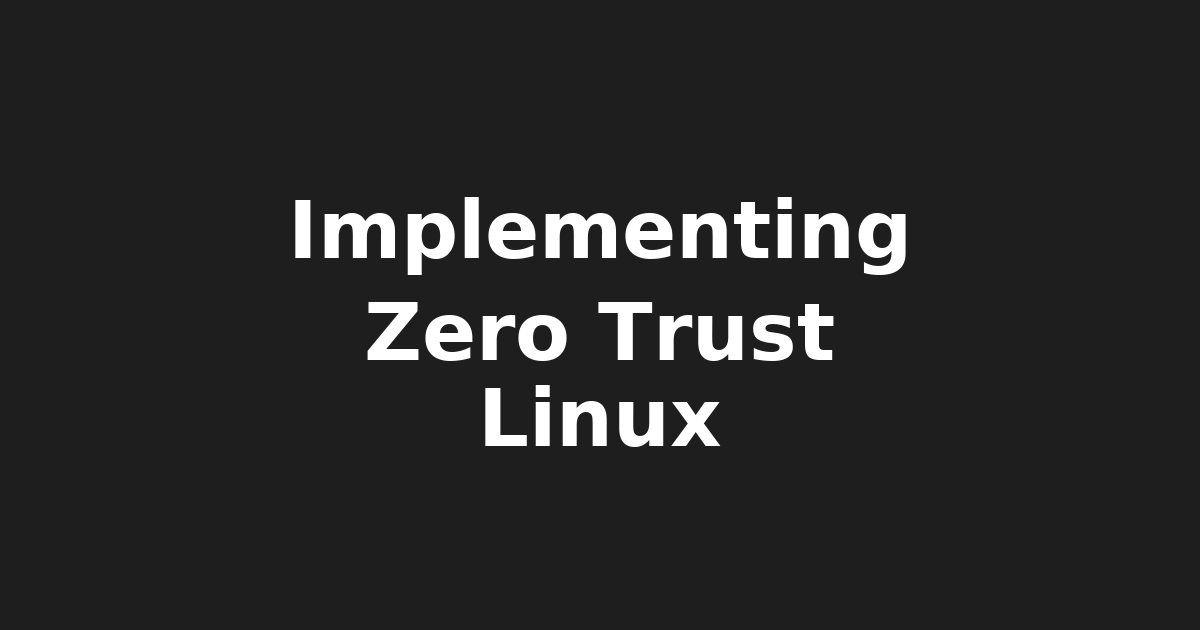Zero-Trust Linux Security: Implementing Least Privilege Access

Zero-Trust Architecture and Least Privilege Access with Linux Security Features: A Comprehensive Guide
The threat landscape continues to evolve, making it essential for organizations to adopt a security strategy that can adapt to emerging threats. One approach gaining traction is zero-trust architecture, which assumes that all users and devices are potential security threats. In this article, we'll explore the concept of least privilege access (LPA), its significance in secure design, and how Linux provides various tools and features to implement LPA effectively.
Why Zero-Trust Architecture is Trending
As the use of cloud computing, IoT devices, and remote work increases, security concerns are becoming more pressing than ever. The trend of adopting zero-trust architecture is gaining momentum due to several factors:
- Increased emphasis on security: With the rise of cyberattacks, data breaches, and identity theft, organizations are recognizing the importance of robust security measures.
- Least Privilege Access (LPA): LPA is a fundamental principle in secure design, where users and services are granted only the necessary privileges to perform their tasks. This approach reduces the attack surface and minimizes the risk of lateral movement.
- Zero-Trust Architecture: This approach assumes that all users and devices are potential security threats, requiring strict access controls and monitoring.
Linux Commands and Features
Linux provides various tools and features to implement LPA effectively:
1. SELinux (Security-Enhanced Linux)
SELinux is a module of the Linux kernel that provides a security framework for the system. It enforces mandatory access control, which ensures that only authorized applications can access sensitive data.
Example Code
# Enable SELinux
setenforce 0
2. AppArmor
AppArmor is a Linux kernel subsystem for providing strong separation between applications. It provides a way to restrict the execution of applications and prevent potential security threats.
Example Code
# Enable AppArmor
ab disable
3. PolicyKit
PolicyKit is a tool used to manage access control, authentication, and authorization in Linux systems. It allows administrators to define policies for user permissions and ensures that only authorized users can perform actions.
Example Code
# Create a new policy file
sudo mkdir /etc/polkit-1/policies.d/
sudo nano /etc/polkit-1/policies.d/my-polkit-policy.yaml
4. SELinux File Contexts
SELinux file contexts are used to specify file permissions and access controls. They ensure that only authorized applications can read or write sensitive data.
Example Code
# Set a file context
sudo chcon -t user:object_r
Real-World Applications
Linux provides various real-world applications for implementing LPA with zero-trust architecture:
1. Implementing LPA with Docker
Docker's security features, such as AppArmor and SELinux, can be used to ensure Least Privilege Access for containers.
Example Code
# Use AppArmor in the Dockerfile
FROM ubuntu:latest
# Set up AppArmor
RUN apt-get update && apt-get install -y apparmor-utils
# Configure AppArmor
RUN ab enable
2. Deploying Zero-Trust Architecture with Linux
Tools like PolicyKit and SELinux can be used to enforce strict access controls and monitoring.
Example Code
# Enable PolicyKit
sudo apt-get update && sudo apt-get install -y policykit-1
# Configure PolicyKit
sudo nano /etc/polkit-1/config.conf
Key Takeaways
Implementing Least Privilege Access (LPA) with Linux security features is essential for ensuring secure design practices in systems and applications. Understanding the principles of Zero-Trust Architecture and leveraging Linux commands and tools, such as SELinux, AppArmor, and PolicyKit, can help organizations stay ahead of emerging threats.
